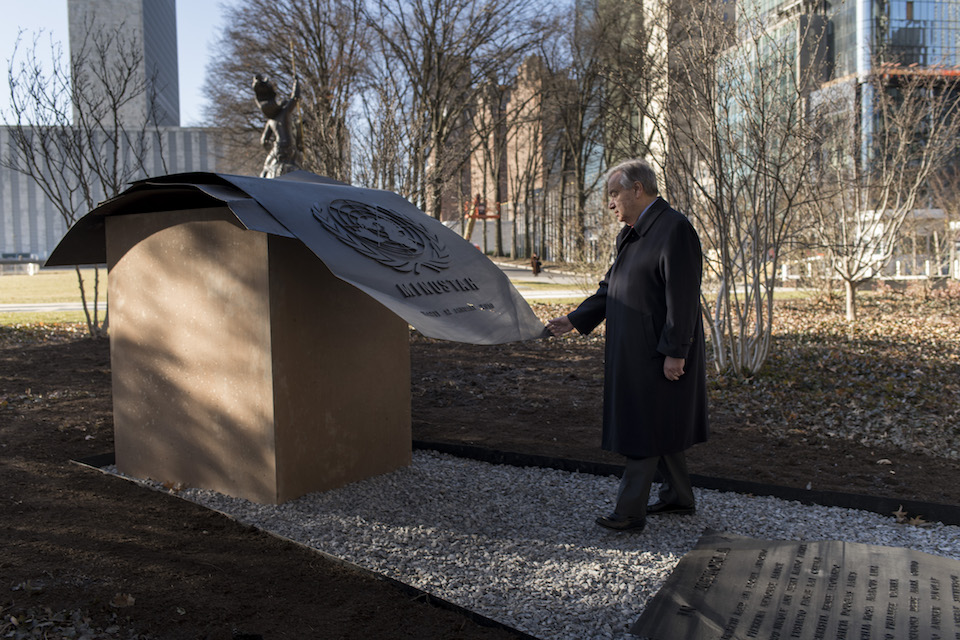
- Select a language for the TTS:
- UK English Female
- UK English Male
- US English Female
- US English Male
- Australian Female
- Australian Male
- Language selected: (auto detect) - EN
Play all audios:
Environmental degradation in India is a runaway problem. There are plethora of laws and regulatory bodies, both at the Central and state levels, to safeguard the environment. Yet the country
continues to be burdened with pollution, its natural resources continue to be exploited and people’s participation in environmental management remains grossly inadequate. So in January
2015, when the Union Ministry of Environment, Forest and Climate Change (MoEF&CC) released its vision “towards transparency and good governance”, it rekindled hope among those demanding
reforms in environment governance. The ministry’s vision assured developing “clear laws, firm rules and transparent processes to ensure a policy-based predictable regime”. An analysis of the
report, which will lay groundwork for this vision, shows that MoEF&CC may not realise this vision. Prepared by a High Level Committee of MoEF&CC, chaired by former Cabinet secretary
T S R Subramanian, the report was to review and suggest amendments to six cornerstone laws: the Indian Forest Act of 1927, the Wildlife (Protection) Act of 1972, the Water (Prevention and
Control of Pollution) Act of 1974, the Forest Conservation Act of 1980, the Air (Prevention and Control of Pollution) Act of 1981 and the Environment (Protection) Act of 1986. Submitted to
the ministry in November 2014, the report is being evaluated by stakeholders and the Parliamentary Standing Committee on Science and Technology, Environment and Forests. Analysis of the
report shows that it has largely become a document about project clearances and approvals. Instead of dealing with nuances and complexities of environmental governance, the committee
proposes a regulatory framework centred around clearances. This is precisely the problem with the current regulatory regime—reducing environmental governance to a sanctioning platform. For
instance, the committee proposes a new law, the Environmental Laws (Management) Act (ELMA), and two new institutions—the National Environment Management Authority (NEMA) and the State
Environment Management Authority (SEMA)—to deal with clearance-related issues. Once in effect, NEMA and SEMA will replace the Central Pollution Control Board (CPCB) and state pollution
control boards (SPCBs). Besides, it recommends retaining the existing Environment (Protection) or EP Act, 1986, and proposes that the Water Act and the Air Act would be “eventually” subsumed
by the EP Act. However it is not clear how the EP Act and provisions of ELMA will be integrated. The Subramanian committee further suggests that the clearance procedure should be “single
window, streamlined, purposeful and time-bound”. It also recommends devolving more projects to SEMA by revising category A and B projects (depending on the spatial extent and potential
impacts, category A projects are cleared by the Centre while category B projects are cleared by the state authorities). In many instances the committee has suggested provisions that can
further weaken the clearance process of projects. One such provision is developing a “special fast-track” mechanism for clearing linear projects, such as transmission lines and irrigation
canals, power and mining sectors and strategic border projects. Such hasty measure can dilute the environment impact assessment (EIA) of projects. Even in the present scenario, most EIA
reports hardly reflect the cumulative impact of projects, resulting in poor decision-making on part of the clearance authorities and making projects contentious. An analysis of the cases
before the National Green Tribunal by Delhi-based non-profit Centre for Science and Environment (CSE) shows that a large number of environment clearance disputes emanate from inaccuracies in
the EIA report. Given that most of India’s mineral reserves are located in important forest habitats, ecologically sensitive regions, which are also inhabited by poor people, and the fact
that many of India’s mining districts and power hubs suffer from high pollution, fast-track clearances can also accelerate resource exploitation, worsen pollution and increase social
alienation. Instead of fast-tracking projects, CSE researchers recommend that the government should take a look at the potential of projects that have obtained green clearances. They are
adequate to sustain the country’s growth vision. For instance, since the beginning of the 11th Five Year Plan in 2007 till January 2015, thermal power projects of more than 255,000 megawatt
(MW) capacity have been cleared, which is much beyond the estimated capacity of 130,000 MW required till 2022 as per the Planning Commission. Similarly, though the de-allocation of coal
blocks in 2014 put a question mark on the fate of many coal block clearances, more than 280 projects with cumulative production capacity of about 865 million tonnes per annum (MTPA) have
been cleared since April 2007. The Subramanian committee has also left out several issues that need to be addressed to ensure a sustainable environment. PUBLIC OPINION SIDELINED The
Subramanian committee has recommended that public hearings must address “only environmental, rehabilitation and resettlement issues” and that a mechanism should be put in place to ensure
“only genuine local participation”. The committee also suggests circumstances under which public hearing can be dispensed with. These include cases where “settlements are located away from
the project sites” or when “local conditions are not conducive to conduct hearing” or in locations where the “cumulative pollution load is pre-determined”. There is no dearth of evidence to
show that over the years community opinion in the clearance process has been sidelined. The committee’s suggestions, if implemented, will further silence public opinion. The committee
suggests “genuine local participation” in public hearings. But how does one determine genuine local participation? For example, a dam affects people living in the immediate vicinity of the
river, as well as those living in the downstream and the watershed areas. In such cases, specifying “genuine local participation” can exclude a lot of people who will be significantly
affected. Moreover, the committee’s suggestion about cases where public hearing can be dispensed with only suggests that the process would be done away with wherever there is a suspicion of
dissent. Public hearing is an important part of the environmental clearance process as it gives opportunity to the local communities to voice their opinion or express concerns about a
proposed project. Therefore, under no circumstance should this be restricted, say CSE researchers. FORESTS UNDERMINED The Committee claims that the revisions it has proposed for forest
clearance are “intended to reduce the time taken (for forest clearance projects), without compromising the quality of examination”. The recommendations, however, seem to only focus on
reducing time while quality of examination is severely compromised. While advocating clearance mechanism, the committee does not offer anything to ensure the protection of forests,
ecosystems, and forest-dependent communities. Its suggestion that enumeration of trees, required for physical verification of forest, can be done after Stage I clearance, will further dilute
the assessment of forestlands which already is very weak. At present, diversion is allowed without any detailed assessment of the ecological values of forestland. The most problematic
recommendation is regarding the consent of communities. The committee suggests that “for the purpose of according first stage clearance, a certificate under the Forest Rights Act (FRA) of
2006, may not be insisted upon”. The certificate under FRA “can be obtained during the prescribed period for compliance with the conditions of first stage clearance”. For linear projects,
the committee further recommends doing away with the requirement for gram sabha consent under the pretext that these projects “benefit community at large”. The recommendation will only make
settlement of forest rights difficult. The committee itself observed that “a large number of cases are pending in the MoEF&CC as applications are not accompanied by a certificate under
the FRA” and information is presented in an “ambiguous” manner which needs verification. What is required is a revamping of forest clearance process with a strong focus on thorough
assessment of impacts of forestland diversion, considering both ecological and social consequences. INSTITUTIONAL DEFICIT Laws can be reformed and processes can be streamlined only if the
institutions concerned with implementing them have adequate resources, competence and infrastructure, and function in a transparent manner. However, most of SPCBs, the country’s largest
environment regulators, lack man-power, infrastructure and competence. They are also riddled with corruption. These issues are well recognised within SPCBs themselves. Increasing industrial
activities in recent years and formulation of new legislation have increased the workload of SPCBs. However, there is not enough human power to match the increased administrative
responsibilities. For example, Odisha Pollution Control Board officials say that between 1996-97 and 2006- 07 the administrative responsibilities of the board have increased three to four
times. However, the technical human power to handle such responsibilities has increased only 1.5 times. This is despite the fact that many SPCBs have high number of vacancies. While 60 per
cent of posts in Bihar SPCB is lying vacant, for Karnataka and Meghalaya the figure is 50 per cent, and for Kerala, Punjab and Goa 30 per cent. Besides, the archaic recruitment rules have
made it difficult to hire competent people. The entry level salary of Bihar SPCB is still Rs 2,500. No SPCB has a position for an economist or a biologist or an ecologist or a statistician
or a public relation officer. Given the diversity of projects that SPCBs deal with, they need experts who can understand the other impacts of projects, not just pollution. The situation is
only a little better at CPCB, which has been operating without a full-time chairperson for the past few years and the vacancy is being filled through ad-hoc appointment. A major problem that
stems from weak institutions is poor monitoring of environmental conditions and ensuring compliance. For instance, the six regional offices of MoEF&CC are supposed to monitor thousands
of projects every year, but they hardly monitor 100 projects. The entire compliance system is based on periodic submission of compliance reports by the project proponents. MoEF&CC does
not have the human power to even check these compliance reports. Most of the information provided goes unverified and offenders are rarely penalised. Moreover, as these “self-compliance”
reports are not put in the public domain, there is little possibility of public scrutiny. As far as projects cleared by the state environment authorities are concerned, there is no clarity
on whom they are accountable to. The situation is equally bad when it comes to SPCBs. It is estimated that SPCBs monitor only 25 per cent of the grossly air polluting factories every year;
the remaining submit self-monitored data. They monitor less than one per cent of hazardous waste samples. However, the new institutions proposed by the committee—NEMA and SEMA—do not offer
ways to resolve this crisis. The new environmental institutions should integrate the existing institutions and make them strong and effective by increasing resources and manpower,
infrastructure and encouraging technological innovations, integrating multidisciplinary expertise, institutionalising systems for transparency and accountability and putting into practice an
institutional assessment process. TECHNOLOGY REPLACES MONITORING Though the committee has recognised lack of monitoring and enforcement, it has probably failed to understand the reasons and
offered technological solutions. Its report specifies that “while physical inspections may be required, increasingly, measuring instruments need to be inducted in the monitoring process”.
The use of technology needs to be accompanied by processes to strengthen the regulatory agencies. The committee has also proposed the concept of “utmost good faith”, which is essentially to
hold applicants seeking clearance legally responsible for their statements, and penalise them for any falsehood, misrepresentation or suppression of facts. It argues that the concept will
curb “inspector raj” by reducing dependency on regulators. This is when regulatory agencies do not have enough inspectors. Besides, the idea of “utmost good faith” will ensure that the
burden of proof regarding pollution lies with the industries and not with the regulator as is the present case. Provisions equivalent to “utmost good faith”, already exist under the EIA
Notification, 2006, the Water Act and the Air Act. However, they have never been enforced because a system has not been put in place to identify non-compliance and there is not enough
deterrence. Moreover, to use and interpret information derived from using scientific tools effectively, the capacity of the concerned authorities must be developed in the first place. Given
the complexity of issues, a reform exercise to ensure better environmental governance requires a multifaceted approach, focusing on revising and synergising laws, streamlining regulatory
processes and strengthening institutions. For this, CSE researchers suggest, the government needs to move away from a clearance-centric vision. The environmental problems that India is
burdened with are not because of problems in project approval and clearance processes. The problems persist because the government has not addressed the issues of planning, management,
regulation, monitoring and enforcement of regulatory provisions. The potential of most laws, rules and notifications have not been realised because of weak regulatory institutions. While the
committee has focused on some of the issues related to environmental clearances, and management of industrial and infrastructure projects, it has failed to address critical issues, such as
waste generated from various sources in the cities. For example, dealing with sewage, municipal solid waste and hospital waste is a major challenge across the country. The government will
need huge investments to upgrade and develop infrastructure to effectively address waste management. Moreover, climate change that is now threatening lives and livelihoods needs to be
factored in. To ensure environmental protection in the long term, overall environmental responsiveness needs to be improved. The establishment of an exclusive “National Environment Research
Institute” through a parliamentary Act, as the committee has suggested, is not required. Instead of creating one exclusive institute, the government needs to bring environmental research
into the mainstream and improve capacities of existing institutes. All these aspects must be considered to develop a reform framework. The focus of the regulatory system must move towards
environmental planning and management.







